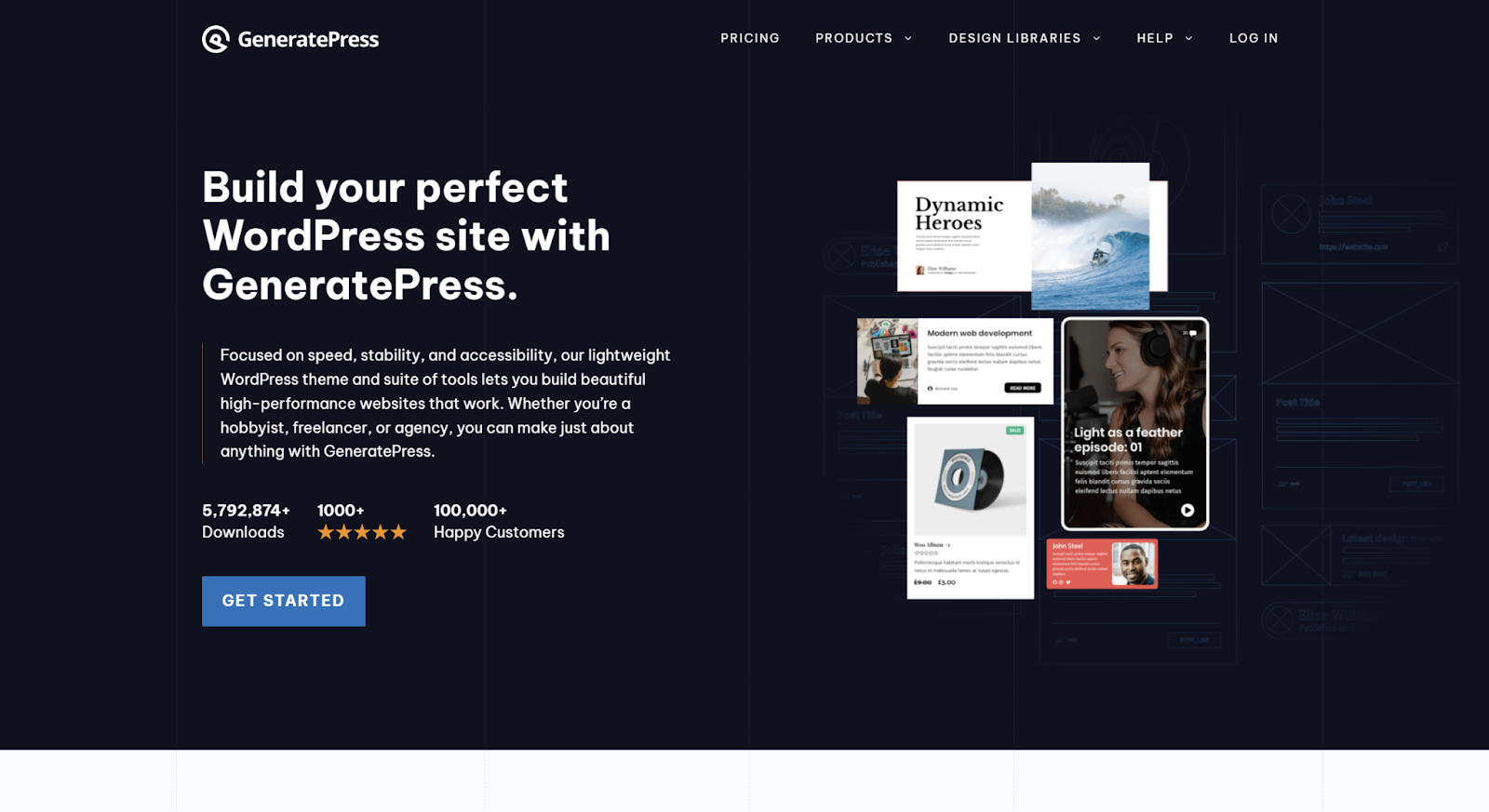WORDPRESS
WordPress Themes 101: Free vs. Premium and Everything in Between
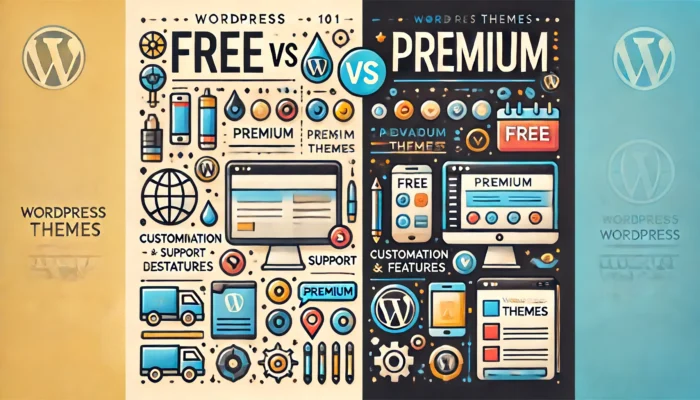
Do you want to learn about WordPress themes and how they can take your website to the next level? If so, you’re in the right place!
There’s no question that choosing the right WordPress theme is vital for building a website that not only looks great but also offers your customers the best experience possible.
But as a beginner or someone looking for a change, this process can be overwhelming, after all, there are thousands of themes to choose from!
We believe that by understanding themes and the important factors around them, you’ll be better prepared to choose one that aligns with your goals. Today, we will give you the full rundown on WordPress themes. Keep reading, and you’ll learn everything you need to know about finding the perfect theme for your site.
Let’s begin!
Understanding WordPress themes
At its core, WordPress themes are a collection of files that define the appearance and functionality of a WordPress website. Themes control everything from the layout and color scheme to the typography and navigation menus. They are the visual and structural foundation that dictates how content is presented to visitors.
Not only do themes determine the look of your site, but they have a direct impact on performance and your overall user experience (UX).
Choosing the best WordPress themes can enhance the overall branding, improve readability, and provide a seamless browsing experience across different devices. But a quick look at the ecosystem will show you that the possibilities are quite endless. You can find sleek and minimalist themes as well as incredibly in-depth, feature-rich options and everything in between.
One way to start exploring your options is to see what themes your favorite websites use. There are various tools and resources available that can help you with your research. A popular option is “What WordPress Theme Is That?,” which allows users to enter a website URL and quickly discover the active theme. Additionally, “WordPress Theme Detector” can automatically detect and display the theme information for any WordPress site you visit.

Choosing the right theme
Now that you know a bit more about themes, let’s talk about some of the major factors you need to know when choosing one for your website.
- Responsive Design: Did you know there are over 5.48 billion mobile users? This statistic highlights why it’s essential to choose a theme that offers a responsive design that looks great and works perfectly across all devices and screen sizes.
- SEO Optimized: You’ll want to find a WordPress theme that can help with search engine optimization (SEO). For example, some themes come with a schema markup alongside the theme. This feature can give your website a competitive edge in search engine rankings and lead to more traffic.
- Customizable Design: Depending on your needs, you may want to choose a theme that allows for easy and flexible customization, whether through theme options, page builders, or the ability to modify the code directly. This feature can help you add some personal flair and style to your site.
- Compatibility with WordPress plugins: WordPress plugins can add powerful functionality to your website, so it’s crucial to choose a theme that is compatible with the plugins you plan to use or might need in the future. Trust us, you don’t want to buy a theme that isn’t compatible with what you’re currently using.
- Loading Times: Research shows that 53% of people will leave a website if it takes too long to load. So, this means a fast-loading website is crucial for boosting engagement, sales, and your search visibility. When looking for a theme that can help, choose one with optimized code and a lightweight design.
Free vs. premium themes
When it comes to choosing the best WordPress themes for your site, you’ll need to balance the factors above with the decision to use a free or premium option. Both have their advantages and drawbacks that you should know.
Here’s a quick overview of each, as well as when you should use them on your site:
Free WordPress Themes:
- Cost-effective solution, which can be helpful for people on a tight budget.
- A wide range of free themes are available in the official WordPress directory and third-party repositories. This means you’ll have options, even if you decide to take the free route.
- Ideal for basic websites or those with limited customization needs.
- Free themes are usually not updated as often, which can pose security risks if not maintained properly.
- There are limited support options, so you’ll need to check out forums if you get stuck.
When to choose a free theme:
- You’re on a tight budget and have basic website design needs
- You’re comfortable with limited customization options, or don’t need advanced customization
- You’re willing to take precautions to keep your site safe and maintained due to the lack of support and updates
Premium WordPress themes:
- Typically come with more advanced features, which means you can tweak your site in a way that perfectly matches your needs.
- Outside of standard page building, these themes are often highly customizable with various built-in options and integrations.
- Provide access to dedicated support and step-by-step guides when you have a specific problem.
- It can be more expensive, ranging from one-time fees to recurring subscriptions.
When to choose a premium theme:
- You require advanced features and functionality.
- You value regular updates, support, and maintenance.
- You need a highly customizable and unique design.
- Your website handles a lot of sensitive information or traffic.
Ultimately, the decision between a free or premium WordPress theme will depend on your specific needs, budget, and the level of customization and support you require for your website. Both have a place in the community.
Popular WordPress themes
Now that you know a little more about themes and how they work, let’s have a look at some of the best themes and how they can help you take your website to the next level.
Astra
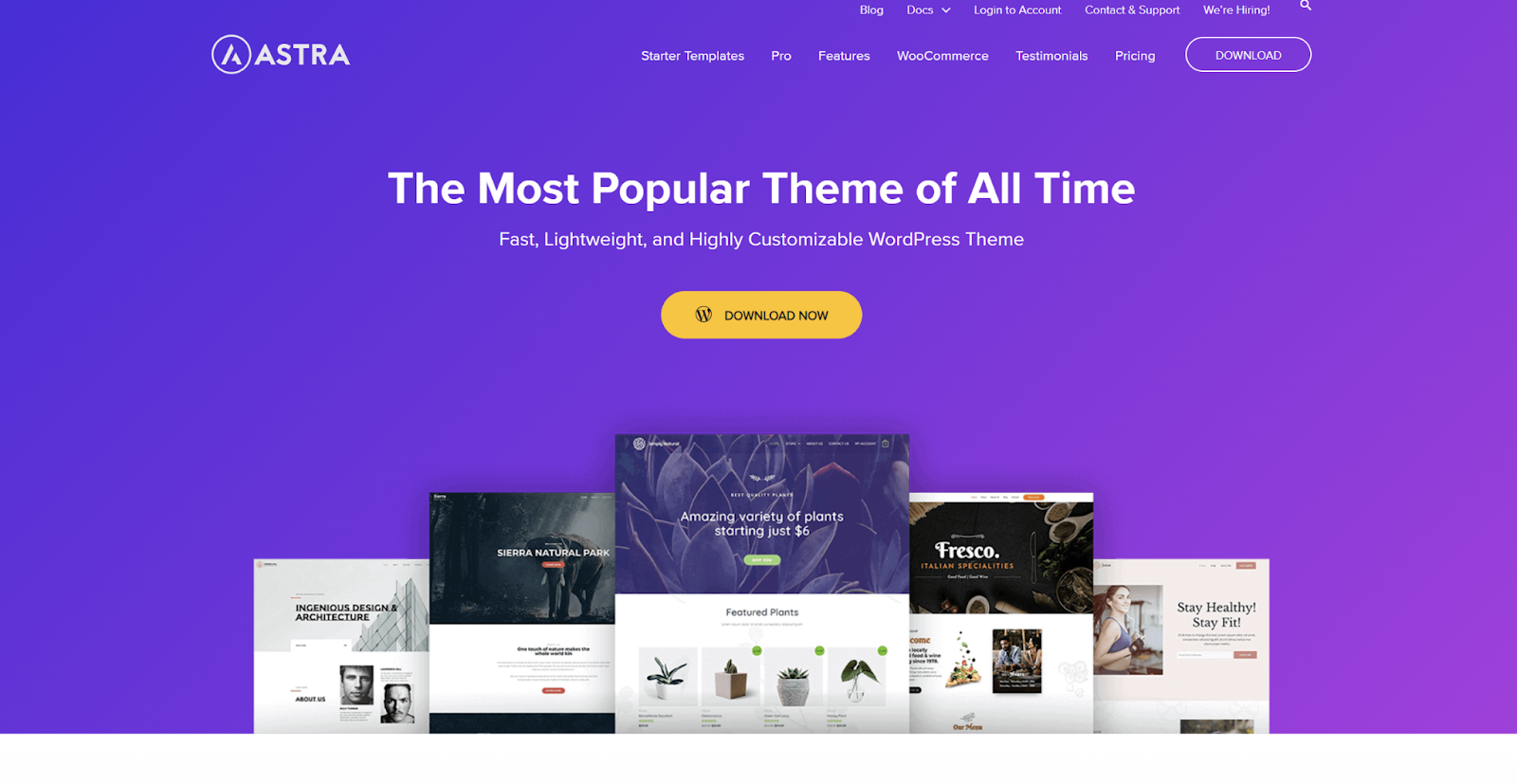

Price: Free + $59 per year
Astra theme is a multipurpose and lightweight theme that has become extremely popular among WordPress users due to its performance, customizability and compatibility with popular page builders such as Elementor, Beaver Builder etc.
The free version of the theme offers basic yet important features such as responsive layout, typography controls, different layouts etc. The premium version of Astra, Astra Pro, offers advanced features such as custom layouts, header builder, footer builder, typography options etc. Weighing less than 100KB, this theme is one of the fastest WordPress themes and is suitable for any type of website.
GeneratePress
Price: Free + $59 per year
Another modern and popular theme, GeneratePress, is known for its speed and ease of use. The free version already has an integrated layout builder, typography options, and basic pages such as services, portfolio, and contact.
GeneratePress is also an ideal WordPress theme for website layout because of its visual page builder in the premium version. Some of the premium features of this theme include a site library, custom layouts, sections, headers, typography, pricing tables, WooCommerce support, and advanced theme settings. If you’re looking for WordPress eCommerce themes, this is an excellent option.
OceanWP
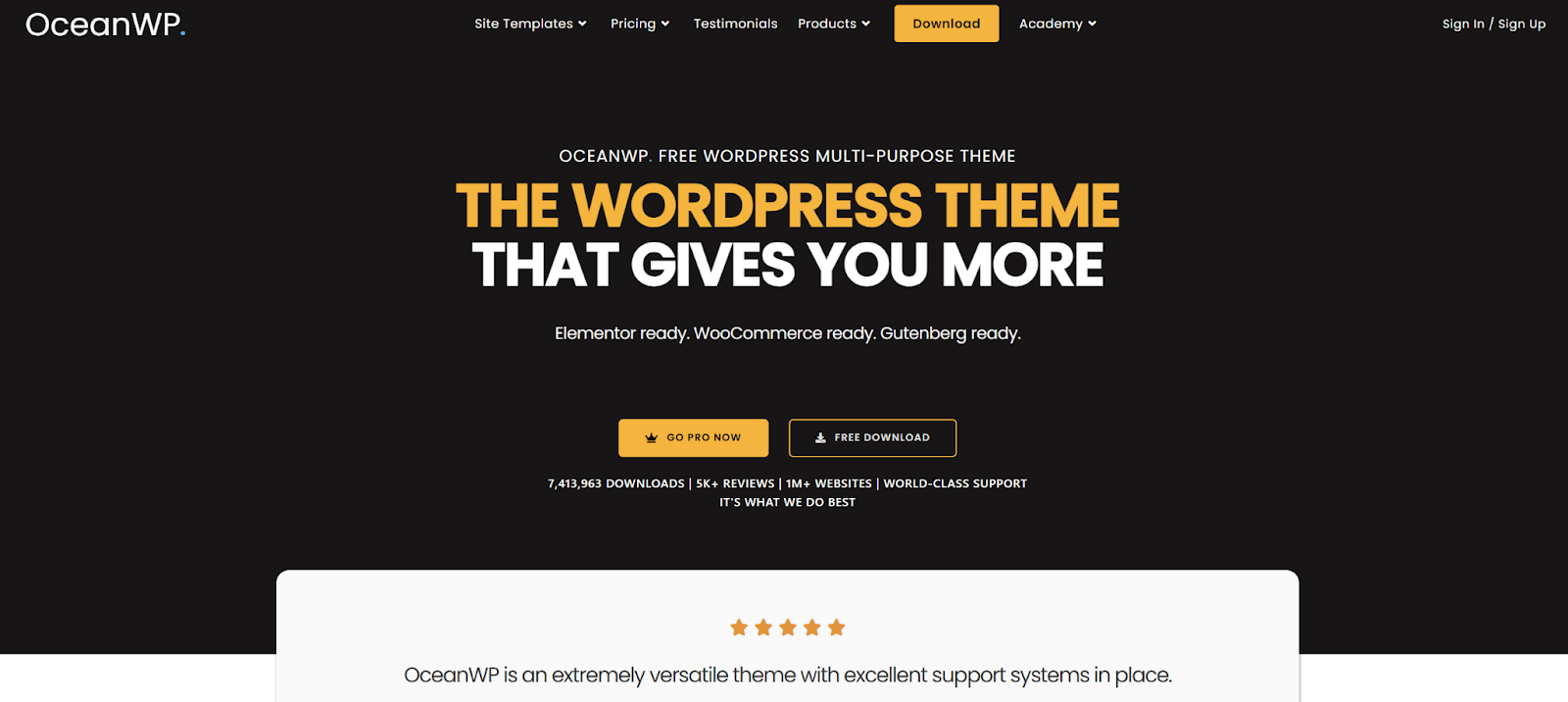

Price: Free + $44 per year, $176 for life
A multipurpose theme with strong eCommerce and online store capabilities, OceanWP offers a range of pre-built website demos in the free version, as well as WooCommerce integration and all the customization options you’d expect from a popular WordPress theme.
Further premium features include a pop-up builder, sticky headers, content slider, icon box, feature grid, table of contents and more. The theme also includes premium add-ons for integrating with some of the most popular plugins such as MonsterInsights, WP Rocket, and AIOSEO. Overall, OceanWP is a powerful theme suitable for business websites and online stores.
Avada
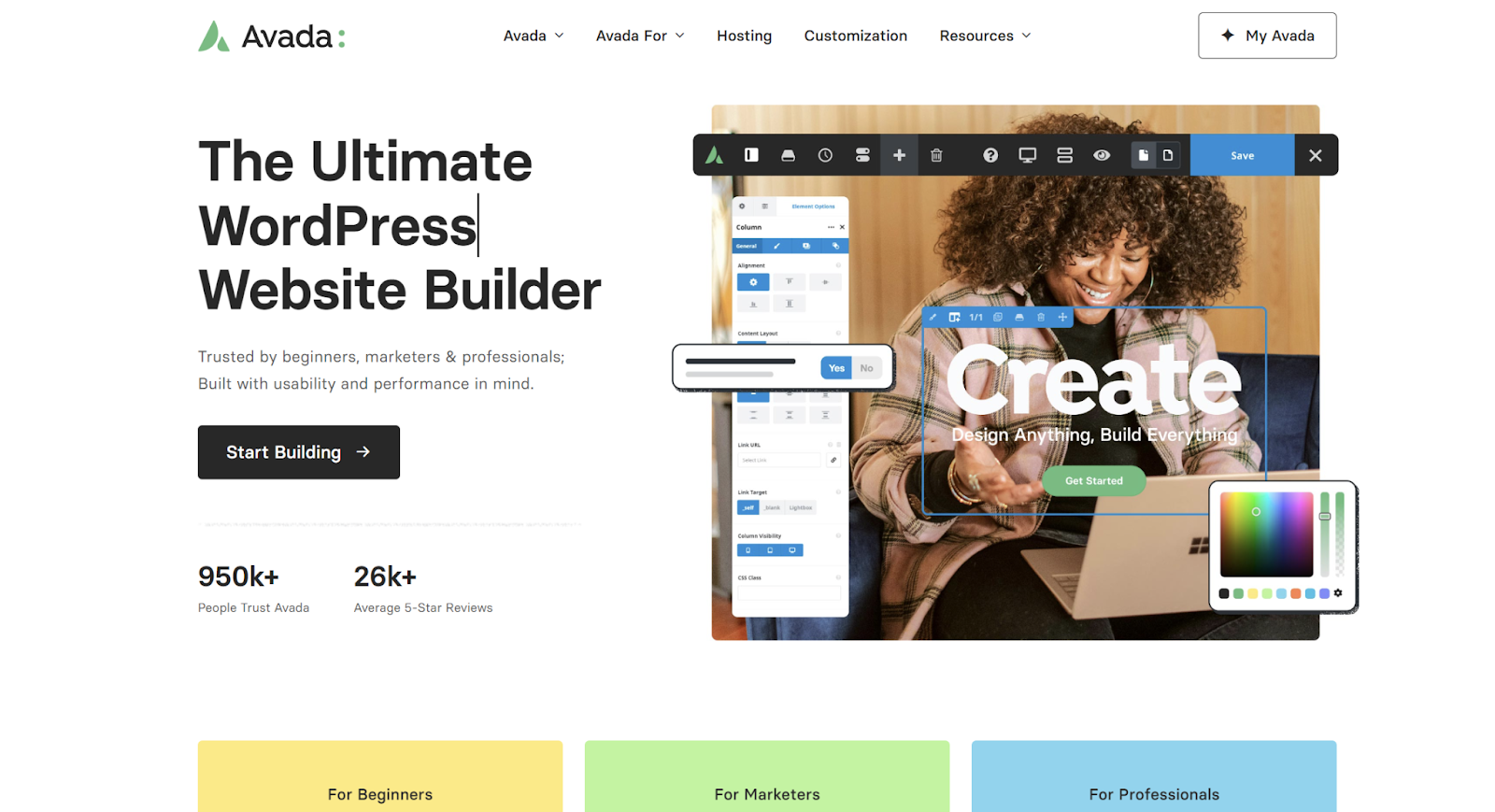

Price: Premium $69 per year
Avada is a top-selling theme on ThemeForest. It is a fully packed, highly functional, responsive, and versatile premium WordPress theme with a visual page builder, dozens of pre-built website layouts, tons of custom options, header builder, footer builder, and e-commerce shopping cart options.
Out of the box, Avada comes with lots of layout possibilities and you can create any type of website from business and corporate sites to e-commerce stores, restaurants, cafes, product showcases, portfolio sites, travel and wedding sites, medical and law firms, SEO and marketing agencies, and any type of responsive website.
We like the Visual Pagebuilder, which allows users complete creative freedom to build stunning and highly effective web pages. In addition to that, it offers Header Builder and Footer Builder as well. Avada is a complete theme which will fulfill all your requirements.
Divi
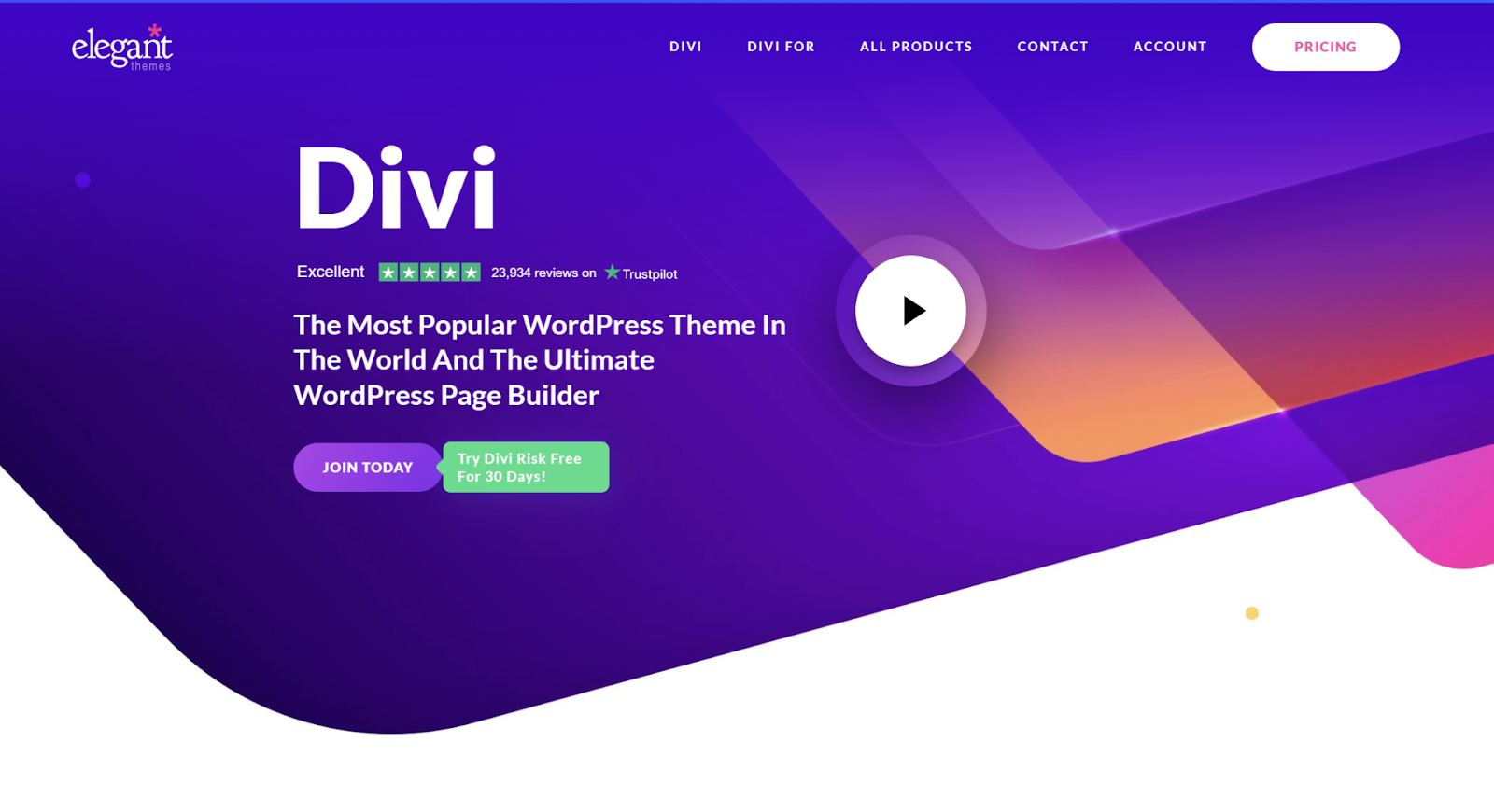

Price: 30-day free trial, $89 per year
Divi is a bestselling premium WordPress theme by ElegantThemes which comes with a great drag-and-drop page builder. This enables complete control over your website’s design along with remarkable layout choices.
The user-friendly visual builder helps create personalized layouts, incorporate animations, and take advantage of the pre-designed layouts and modules. Other advanced options that Divi offers are split testing, custom CSS controls, and robust theme options. All these make Divi a versatile choice for agency websites, designers, and for everyone looking for a totally customizable web solution.
Thrive Themes
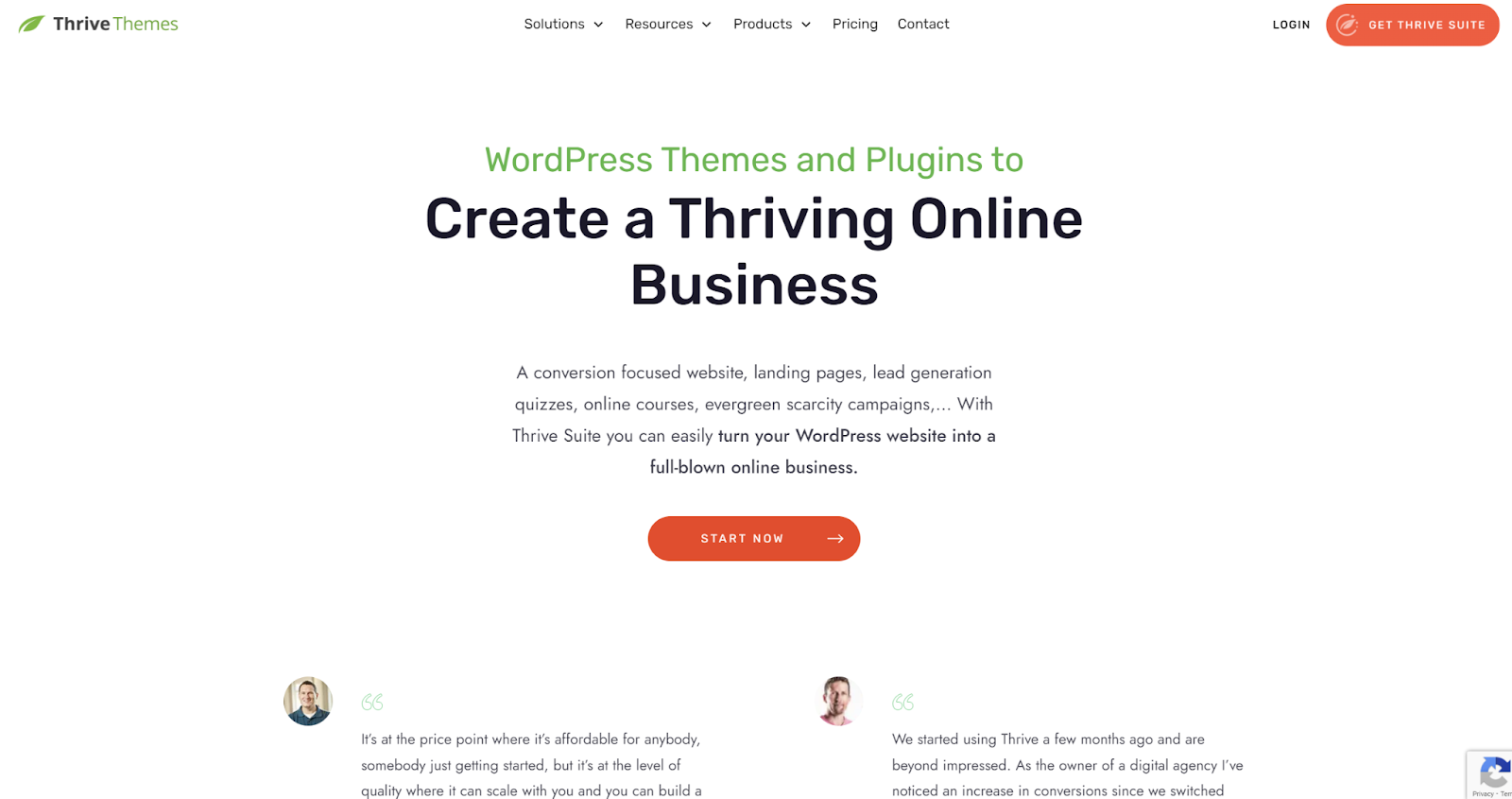

Price: $149 per year
Thrive Themes offers a great theme builder that can help you create stunning, high-performing websites. It comes with a list of designer-made and tested themes that can be installed with a click. Set global website branding effortlessly, including smart brand colors, global font sets and pairings, and dark/light brand logos.
With Thrive Themes, you can visually edit all your theme template files, including blog posts, headers, footers, sidebars, 404 pages, and more. The theme builder allows you to edit and style blog lists with ease and make sweeping changes across your entire website or fine-tune each pixel.
Ideal for marketers and eCommerce business owners, Thrive Themes provides the flexibility and power to create engaging, conversion-optimized websites. It integrates seamlessly with other popular WordPress plugins, making it a great choice for both new and established businesses.
Kadance
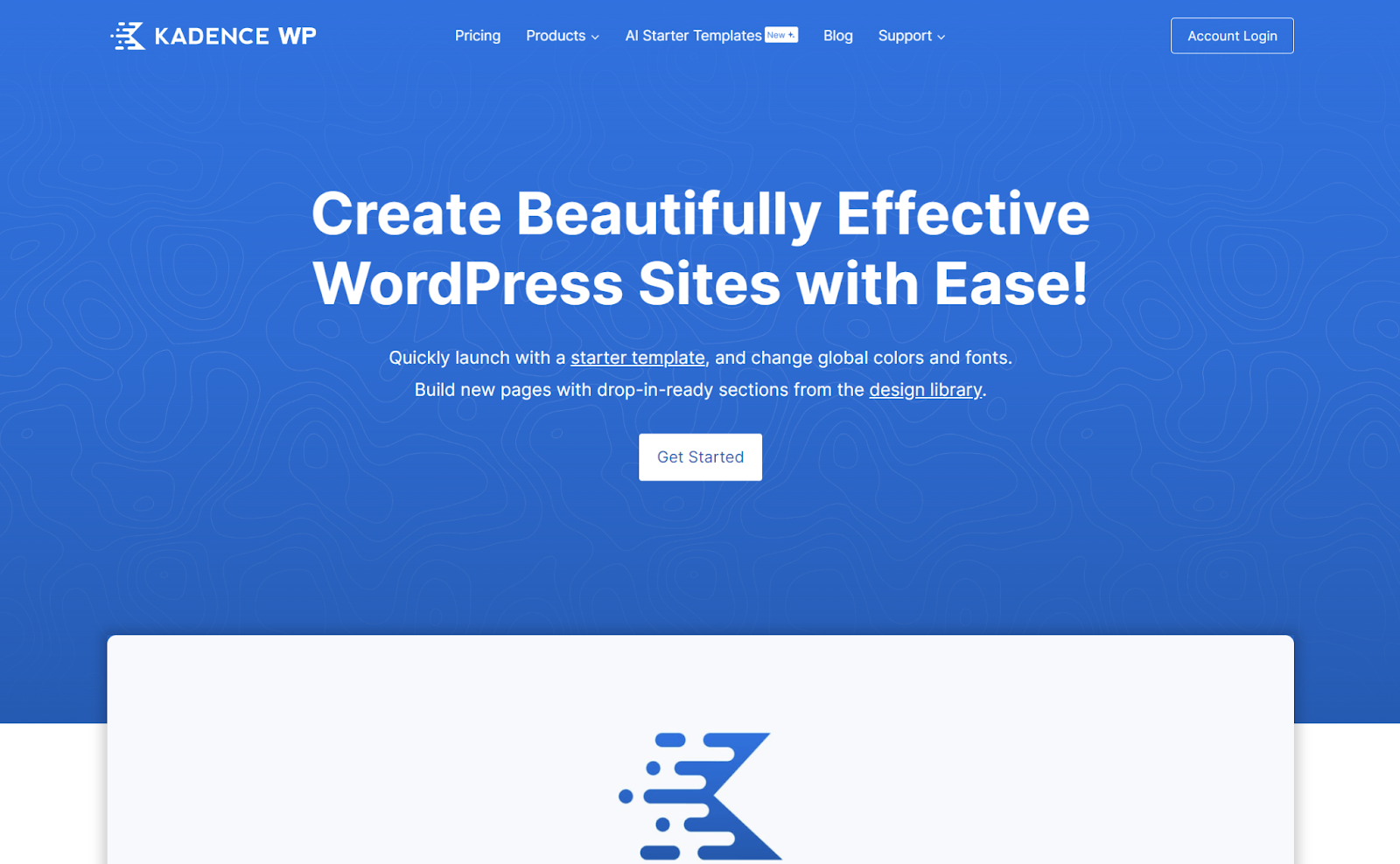

Price: Free + $149 per year
Specialized WordPress themes
WordPress themes are very versatile, but sometimes you need something more targeted – a specialized WordPress theme just for your site and its unique purpose.
With that thought in mind, let’s look at some of the top theme choices for some of the most common website types, including blog, e-commerce, and business themes.
WordPress blog templates
Perhaps your #1 priority is to create a successful blog. In that case, you need a WordPress theme that’s optimized for writing and blogging. Here are some of the top WordPress blog themes featuring user-friendly elements that bloggers will love:
- Design elements that encourage readability and content discovery
- Built-in featured posts, related posts, and popular posts widgets
- Integration with social networks for sharing
- Easy customization of author boxes
- Integrated email/newsletter signup forms
Some of the most popular WordPress blog templates include Editorial, Novelty, and Poseidon. Many of the best blog themes emphasize clean design and minimal distractions for readers while still offering plenty of customization and tools.
WordPress Ecommerce templates
If you’re ready to create an online store, you’ll need an eCommerce WordPress theme. All of the best WordPress eCommerce templates are optimized for shopping and include integration with the popular WooCommerce plugin and other shopping cart systems.
Other features include:
- Product catalogs and shopping carts
- Secure checkouts
- Advanced product filters and search
- Cross- and upselling
- Customer reviews and ratings
Astra Pro, OceanWP, and Divi all offer strong eCommerce support, while dedicated eCommerce templates like Shoptimizer and GrooveKart are specifically designed for this.
When choosing an eCommerce WordPress theme, consider the size of your product catalog, the payment options you need, and any other functionality like memberships or subscriptions.
WordPress business and corporate templates
Whether you’re a business, agency, or professional, your WordPress theme can make or break your credibility and trust with clients and customers.
Many of the best WordPress themes for business and corporate sites feature professional designs and useful business tools, including:
- Clean, corporate layouts
- Staff profile pages
- Team portfolio and case studies
- Testimonials and client logo sliders
- Advanced contact forms and map integrations
Neve, Customizr, and the Divi theme are all popular choices for business templates. The latter offers a whole suite of professional layouts and designs for many types of industries.
When selecting a business WordPress theme, consider your industry niche, whether you need eCommerce, and your branding and design style. All of this information will help you determine the right theme for your site.
Ultimately, picking the right template can help you start your website strong, whatever it may be. We suggest doing some additional research and looking for themes targeting your specific niche – it will be worth your time, and your visitors will appreciate the fact that your site is optimized for them.
Theme selection based on content needs
Apart from special use cases like blogs or e-commerce websites, you can also consider the type of content you’ll publish and choose the theme that best fits your needs.
Let’s consider some good themes for posts/comments and visual content like portfolios and galleries.
Best themes for posts and comments
Do you think user comments and community engagement will be a major part of your workflow? If so, you should pick a theme that prioritizes posts and comments.
The best themes for posts and comments WordPress provides customizations like blog layouts, commenting, social sharing, related feature tabs, and customizable user profiles.
Some well-known themes in this category include Editorial, Zine, and Suffice. These themes will give you a blank slate for long-form content to go alongside engagement via comments, sharing buttons, and related posts.
Best themes for visual content
On the other hand, if your website is going to contain a lot of visual elements like photography, designs, or graphics, you need a theme that helps in showcasing this type of content.
The themes that are best for websites with lots of visual content usually come with the following features: gallery and portfolio project system, lightbox, grid options, distraction-free modes, and slider integrations.
Some of the well-known themes for websites with lots of visual content include Divi, Neve, Astra, and specialized portfolio themes like Accountor and Imprint. Many of them make use of WordPress’ native media handling while adding better visual layouts and display features.
When selecting a theme that focuses on visual content, consider the type of media you’ll be displaying (images, videos, 3D models, etc.), whether you need proofing areas for clients, and whether print/download options will be needed.
Regardless of the type of content you’ll be publishing, investing time in identifying a theme well-suited to managing how you organize and present that content can lead to a much better user experience for your target audience.
Affordable options
Creating a website needn’t be expensive. There are high-quality, cheap WordPress themes available that ensure your website looks professionally crafted without compromising on performance or usability.
Startups, small enterprises, and people with limited budgets need cost-effective solutions when it comes to choosing WordPress themes. Here are some guidelines on how to find cheap, responsive WordPress themes:
Visit free theme repositories
The official WordPress.org theme repository is the first place you should consider. There are thousands of free themes available there. Free doesn’t necessarily mean the theme is of low quality. There are well-coded, responsive, and regularly maintained themes in the repository if you’re willing to look and be aware of ones that haven’t been updated in a while.
Check for developer/student discounts
Most premium theme providers give attractive discounts to developers, agencies, students, and beginners. Ask if there are special discounts available even if you don’t see any listed.
Freemium themes
There are WordPress theme companies which provide themes based on a freemium model. Kandance from our list above is one such option. You can start with the free version and upgrade to premium features as and when your resources permit.
Watch out for sales and bundles
If you have a flexible deadline, you can wait for the next sale or bundle offer from prominent theme providers. Many of them offer attractive discounts (as much as 30-70%) around various festive seasons like Black Friday and so on.
Wrapping it up
Choosing the very best WordPress theme for your website is a key part of the design process. Not only does your theme determine the appearance of your site but it also determines the experience you build with visitors.
Whether you are creating a blog, an online store, a business website, or a portfolio that is heavy on images, choosing the right WordPress theme from the start will make all the difference to the success of your site.
In this article, we’ve covered the different types of WordPress themes available, some of the popular choices, specialist themes, and even some free alternatives.
So, take the time to research, experiment, and use the advice and resources we shared today. With the right WordPress theme in hand, you’ll be well on your way to creating a thriving website that resonates with your audience.
Additional resources
Theme libraries
- WordPress.org Theme Directory: The official WordPress theme repository with thousands of free themes.
- ThemeForest: A vast marketplace for premium WordPress themes across various categories.
- Elegant Themes: Home to the popular Divi theme and other premium themes and plugins.
Tools for detecting themes
- What WordPress Theme Is That?: A free online tool to detect the theme and plugins used by a WordPress site.
- WPThemeDetector: Another tool for identifying the theme and plugins on a WordPress site.
Theme comparison and review sites
- WPBeginner: Offers reviews and comparisons of various WordPress themes and plugins.
- SeedProd: Provides curated lists and reviews of free and premium WordPress themes.
- IsItWP: Helps you find the best WordPress themes and provides in-depth reviews.
FAQs
What is a WordPress theme?
A: A WordPress theme is a collection of templates and stylesheets used to define the appearance and display of a WordPress-powered website.
How do I install a WordPress theme?
A: To install a theme, go to your WordPress dashboard, navigate to Appearance > Themes, click “Add New,” search for a theme, and click “Install.” Once installed, click “Activate” to apply the theme to your site.
What is the difference between free and premium WordPress themes?
A: Free themes are available at no cost and offer basic features and customization options. Premium themes come with advanced features, dedicated support, and regular updates but require a purchase.
Can I customize my WordPress theme?
A: Yes, most WordPress themes offer customization options through the WordPress Customizer or theme-specific settings. You can change colors, fonts, layouts, and more.
What should I consider when choosing a WordPress theme?
A: Consider factors like design, responsiveness, customization options, compatibility with plugins, SEO friendliness, speed, and support.
How can I find out which theme a website is using?
A: You can use online tools like “What WordPress Theme Is That?” or “WPThemeDetector” to identify the theme and plugins used by a WordPress site.
Can I use multiple themes on my WordPress site?
A: Typically, you can only activate one theme at a time for your entire WordPress site. However, you can use different themes for different sections of your site with plugins or custom coding.
Guest Author: Syed Balkhi is the founder of WPBeginner, the largest free WordPress resource site. With over 10 years of experience, he’s the leading WordPress expert in the industry. You can learn more about Syed and his portfolio of companies by following him on his social media networks.

